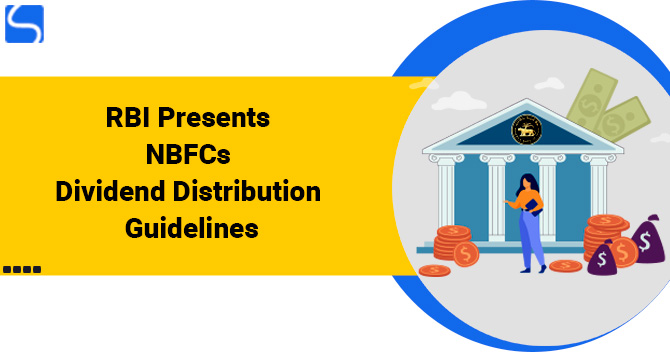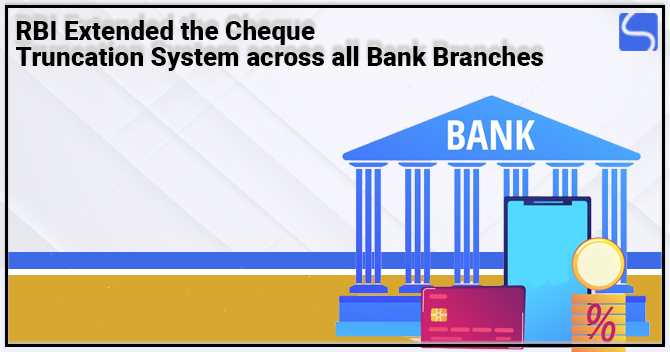RBI Presents NBFCs Dividend Distribution Guidelines

Karan Singh | Updated: Aug 04, 2021 | Category: NBFC, RBI Advisory
The RBI (Reserve Bank of India) issued guidelines on NBFCs Dividend Distribution to introduce greater consistency and transparency in practice. The guidelines shall be successful for declaration of dividend from the profits of the F.Y. (Financial Year) ending March 31, 2022, & onwards. These will be relevant to NBFCs governed by the Reserve Bank of India.
The new NBFCs Dividend Distribution policies shall be applied to the following Non-Banking Financial Companies (NBFCs):
- NBFC-Systematically Important Non-Deposit taking company & deposit-taking company (RBI) Directions, 2016;
- NBFC Non-Systematically Important Non-Deposit taking Company (RBI Directions, 2016.
The boards’ members are responsible for taking the following factors into account before considering the suggestions for dividend distribution for NBFCs
- Monitoring findings the Reserve Bank of India (Housing Financial Companies & National Housing Bank) on differences in categorisation and provisioning for Non-Performing Assets (NPAs);
- Long-term development proposal of the NBFC;
- Qualification is mentioned in the report of auditors to the financial statements.
The Reserve Bank of India also orders NBFCs to make sure 100% obedience to the stated higher limit during the overall dividend amount for the financial year into consideration.
Table of Contents
What are the Criteria Fulfilled by NBFC for Dividend Declaration?
As per the Reserve Bank of India, before stating a dividend, Non-Banking Financial Companies must ensure consistency with given minimum prudential requirements.
| Factors | Necessity |
| Total NPA (Non-Performing Asset) | The total NPA ratio should not be less than 6% in each of the least F.Y, comprising the closure of the Financial Year for which dividend is proposed. |
| Capital Adequacy | NBFCs (excluding Standalone Primary Dealers) should fulfil the relevant regulatory capital requirements for the preceding three years, comprising the year for which the dividend is suggested. Standalone Primary Dealers are required to sustain a minimum Capital Adequacy Ratio (CRAR) of 20% for the F.Y (for all quarters) for which a dividend is suggested. |
| Other Criteria | Non-Banking Financial Companies should remain to present rules announced by the Reserve Bank of India. The Reserve Bank or the National Housing Bank shall not have required any limitations on dividend declaration. Non-Banking Financial Companies must make sure conformity with the provisions of Section 45 IC of the RBI Act, 1934. HFCs shall hold the provisions of Section 29C of the National Housing Bank Act, 1987. |
How much can NBFCs pay as a Dividend Distribution in the purview of the New Policies of RBI?
The qualified NBFCs are alleged to pay out dividends in the purview of the following conditions for dividend declaration appointed by the RBI.
- The suggested dividend should involve both dividends on equity shares and CCPS (Compulsorily Convertible Preference Shares) entitled for the inclusion in Tier 1 Capital;
- The dividend payout ratio is the same as the ratio between the amount dividend payable in a year & the net profit as per the audited balance sheet for the financial year for which the dividend is suggested;
- On the occasion, the net profit for granted period involves any exceptional income, or the financial statements are authenticated by the auditor that shows an overstatement of net profit, the same should be deducted from the net profits which estimating the DPR (Dividend Payout Ratio);
- The eligible Non-Banking Financial Companies should adhere to the following upper limit for Dividend Payout Ratios:
| Ceilings Concerning the Dividend Payout Ratio | |
| NBFC Categorisation | Maximum DPR (%) |
| NBFCs Non-Deposit Taking having no client interface | – |
| CICs (Core Investment Company) | 60 |
| SPDs (Standalone Primary Dealers) | 60 |
| Other Non-Banking Financial Companies | 50 |
- A Non-Banking Financial Company (excluding SPD) which didn’t comply with the relevant prudential requisites mentioned above for each of the last three financial years, may declare a dividend, subject to a limit of 10% on the Payout Ration if they adhere to given situations:
- Meets the relevant CRAR limit in the Financial Year for which it suggests paying out the dividend;
- Has net Non-Performing Asset less than four and as at the end of the Financial Year.
- According to the prevailing rules mentioned above of the Master Direction – Standalone Primary Dealers (RBI) Direction, 2016[1], in the instance of SPDs which have a CRAR equal or more than the regulatory minimum of 15% at the time of each of the quarters of the preceding Financial Year, but less than 20% in any of such quarters, the payout ratio shall not exceed 33.3%.
Guidelines Concerning Reporting System for Dividend Distribution
CIC, NBFC-D, HFC, and NBFC-ND-SI are required to report the aspects of the dividend declared at the time of the Financial Year in the format mentioned below. The report should be submitted to the RBI or the Department of Supervision of NHB within two weeks after the dividend declaration.
Details of dividends stated during the financial year
Name of the NBFC – __________
| Accounting Period | Net Profit for Accounting Period (Rs. Crore) | Rate of Dividend (%) | Amount of Dividend (%) | DPR (Dividend Payout Ration (%) |
Conclusion
The decision of the (RBI) Reserve Bank of India to inspire new guidelines is likely to fortify the dividend distribution policies of Non-Banking Financial Companies by imparting developed consistency and transparency. It seems that instructions will make such institutions more credible from the point of view of shareholders and investors. Regardless of fronts, kind reputation & robust footprint, NBFCs often face the warmth from the regulators on different fronts, comprising financial management. The Reserve Bank of Indian as the main regulator, incorporated appropriate amendments every now and then to keep existing loopholes out of the equation.
Read our article:The RBI States Maximum Dividend Payout Ratio for NBFCs – An Overview















